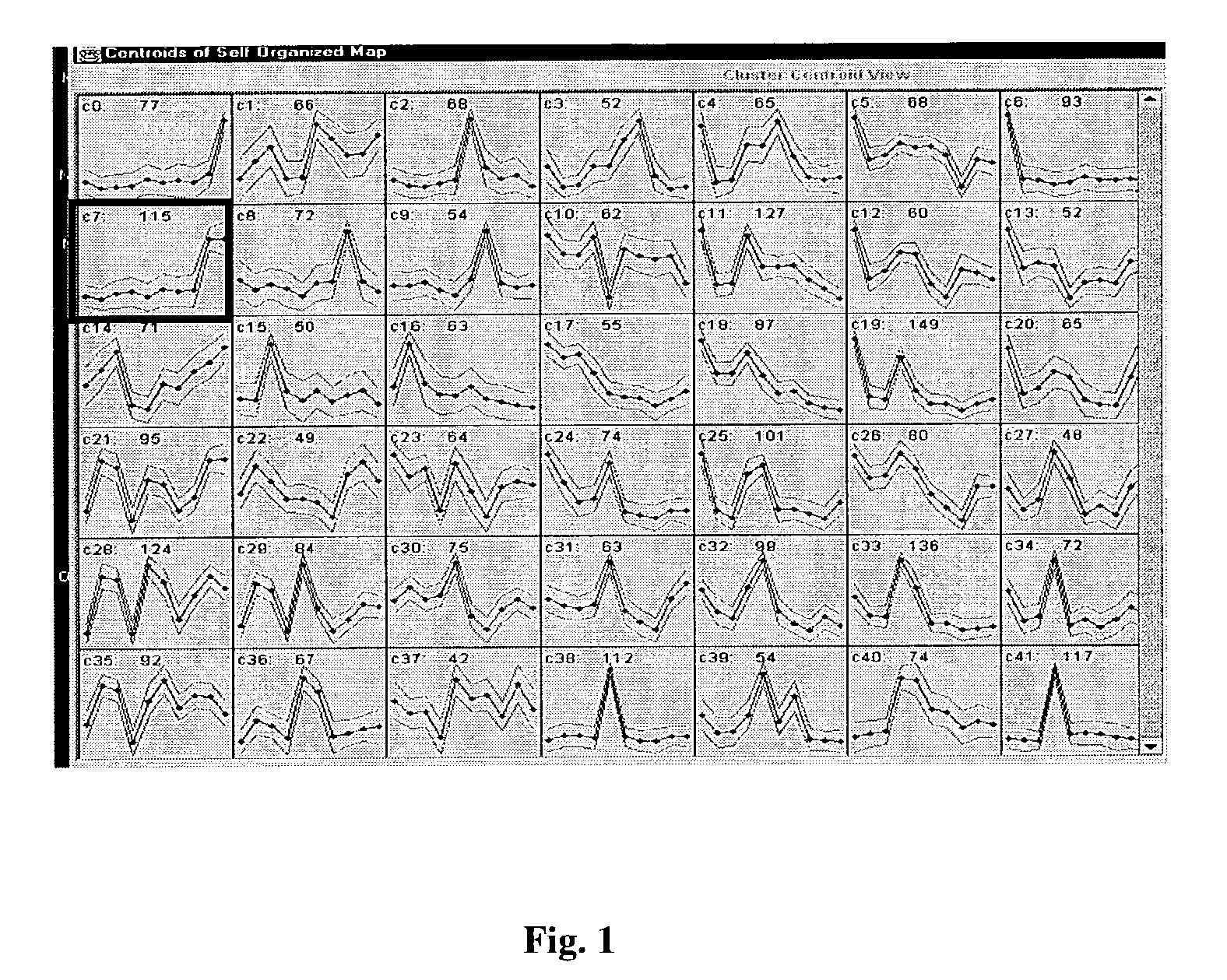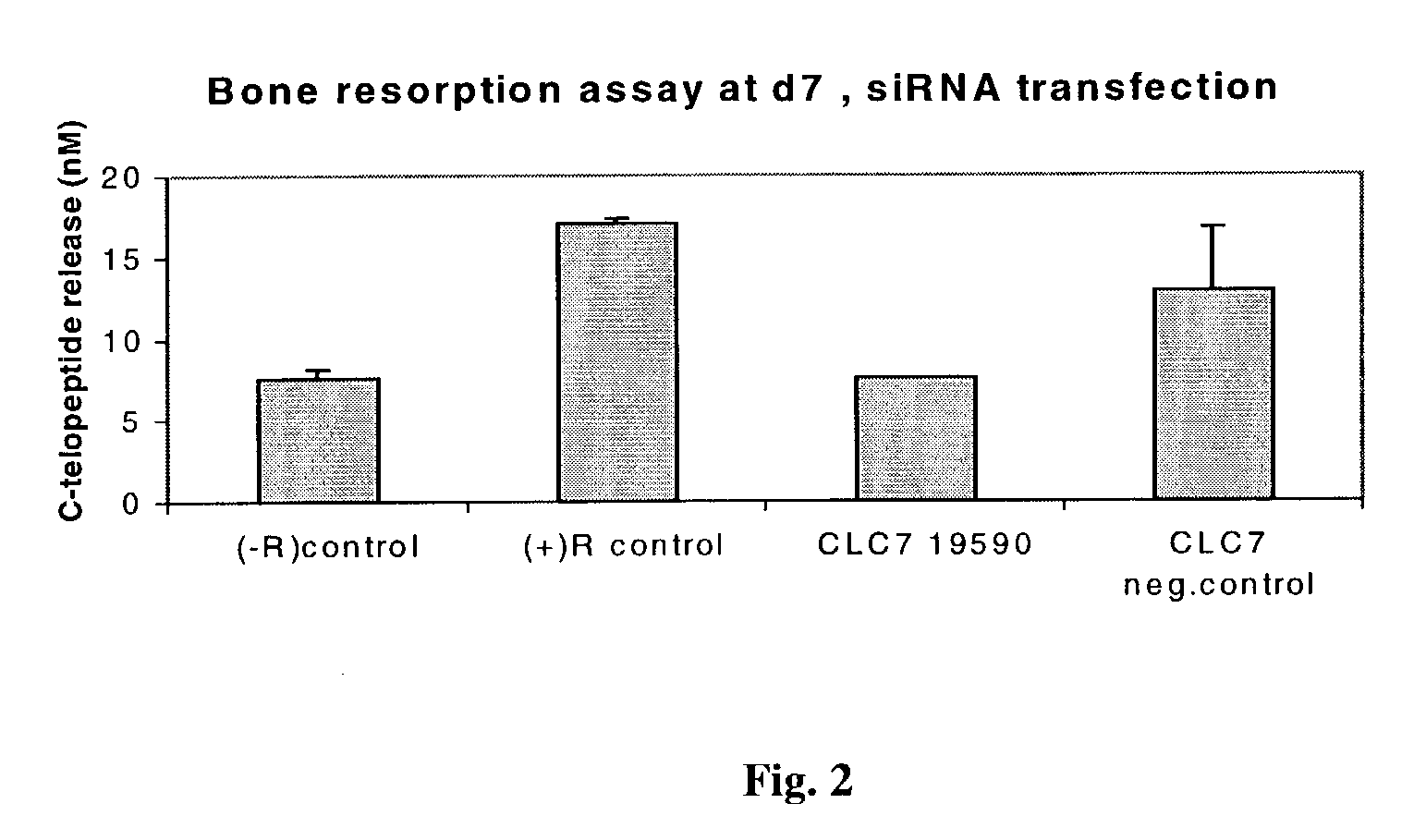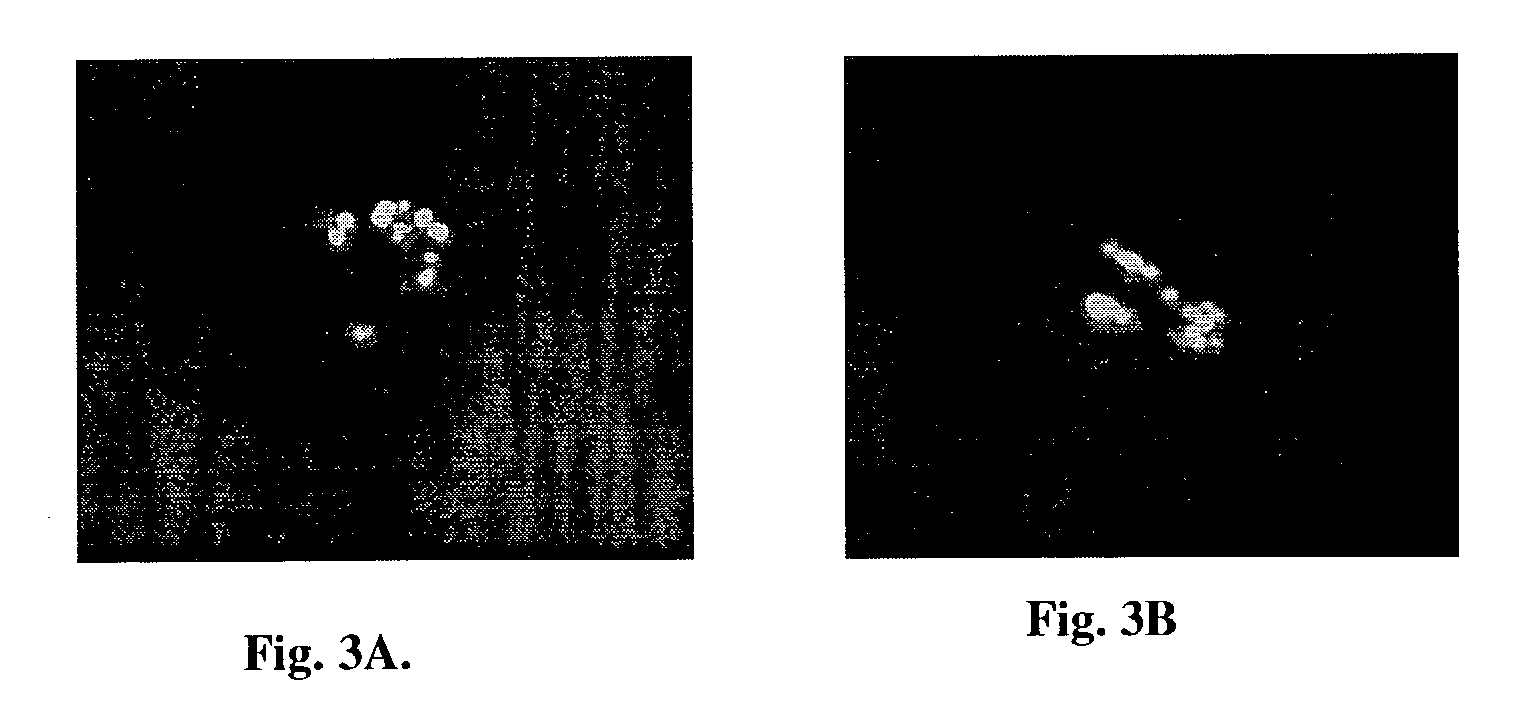Modulators of the CLC-7 chloride channel and methods for their identification and use in the treatment and prevention of osteoporosis and related disease states
a technology of chloride channel and modulator, which is applied in the direction of drug composition, instruments, metabolic disorders, etc., can solve the problems of insufficient understanding of known anti-resorative agents are replete with side effects, and the identity and composition of the chloride channel, such as the chloride channel, are not fully understood
- Summary
- Abstract
- Description
- Claims
- Application Information
AI Technical Summary
Problems solved by technology
Method used
Image
Examples
example 2
CLC-7 Identification Using Affymetrix Mu11K Chip
[0082] Probes were generated from RNAs isolated from Raw264 cells treated with RANKL for various periods of time (control: 6h, 1d, and 3d; RANKL-treatment: 3h, 6h, 16h, 1d, 2d, 3d, and 4d) and used to hybridize Affymetrix Mu11K chips, which contain approximately 11,000 genes with known functions as well as EST sequences.
[0083] After washing, the arrays were scanned and values were assigned to each gene representing its expression level. Genes and EST sequences that showed a relative change of more than 3 fold were identified. EST sequences without any annotation were subjected to an extensive BLAST analysis, which resulted in the identification of sequence homology to known proteins. Subsequent analysis of genes with annotation of channel related function resulted in the discovery that CLC-7 was upregulated during osteoclast differentiation, as shown in Table 10.
10TABLE 10 Upregulation of CLC-7 During Osteoclast Differentiation. peak t...
example 3
PCR Verification of CLC-7 Expression
[0086] The upregulation of CLC-7 in late differentiation was verified by real-time RT-PCR. The channel is upregulated by 3- to 5-fold, 3 to 5 days after RANKL induction, consistent with the results shown in Example 2.
example 4
Screening for Modulators of the CLC-7 Chloride Channel
[0087] A high throughput (HTP) primary screen is useful for screening for inhibitors of CLC-7. Once compounds are identified, a lower throughput secondary assay is useful to confirm the results.
[0088] A. HTP Primary Screen
[0089] CLC-7 is expressed in the mouse mature osteoclasts derived from Raw264.7 cell line. Accordingly, Raw264.7-derived osteoclasts can be used to screen for compounds that inhibit CLC-7. Alternatively, native or mutated CLC-7 protein can be over-expressed by plasmid transfection in a heterologous cell line such as HEK-293, COS-7, or CHO-K1 cells or in a native cell line such as Raw264.7. Once a CLC-7-expressing cell line is generated, it is used to screen chemical libraries for compounds that inhibit activity of the chloride channel. Two different assays can be used to measure CLC-7 activity, as follows:
[0090] (i) Chloride Ion Transport
[0091] CLC-7-mediated chloride transport can be measured by using a halide-...
PUM
| Property | Measurement | Unit |
|---|---|---|
| time | aaaaa | aaaaa |
| time | aaaaa | aaaaa |
| time | aaaaa | aaaaa |
Abstract
Description
Claims
Application Information
 Login to View More
Login to View More - R&D
- Intellectual Property
- Life Sciences
- Materials
- Tech Scout
- Unparalleled Data Quality
- Higher Quality Content
- 60% Fewer Hallucinations
Browse by: Latest US Patents, China's latest patents, Technical Efficacy Thesaurus, Application Domain, Technology Topic, Popular Technical Reports.
© 2025 PatSnap. All rights reserved.Legal|Privacy policy|Modern Slavery Act Transparency Statement|Sitemap|About US| Contact US: help@patsnap.com



